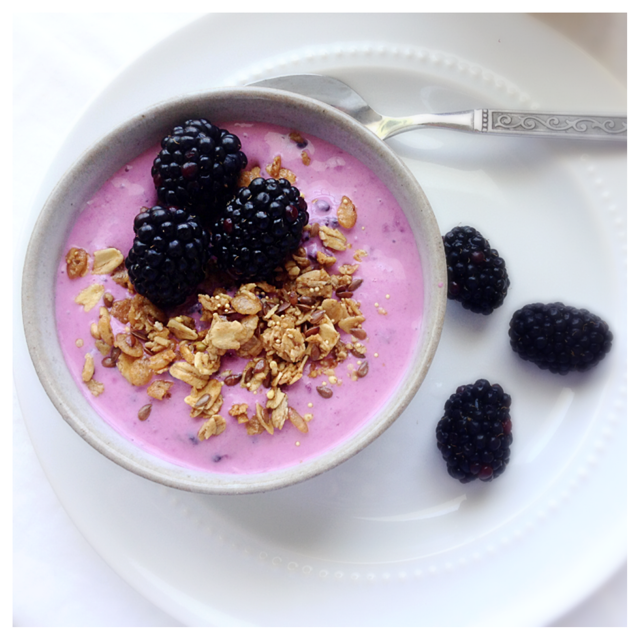You might be in a place where you are thinking, “I know my athlete needs help figuring out their best nutrition strategy to perform their best in their sport”.
Maybe your athlete complains of:
Trouble eating anything before morning practices, making it hard for them to reach their potential in each practice
Trouble fueling through a busy school day, often skipping lunch or missing needed snacks
Feeling dizzy or light headed in practices or events
Confusion over what to eat before games or performances and between events on long days of games or competition
Not knowing what to eat after sustaining a big injury like an ACL tear or stress fracture
Constant fatigue, even though they get a good amount of sleep at night
You have tried to talk to them and they may or may not have tried to make changes on their own, but you both realize that they need more. They need guidance from a professional.
You start doing your research and realize there are a LOT of people out there saying that they can help. Who do you choose in the sea of options?
This is why I am writing today’s article. Because I have found that there are so many people out there claiming they can help but with very little training or education or understanding about the needs of a child and adolescent athlete. If your athlete is truly struggling with their nutrition, to the degree that it has been affecting their performance or their mental health or their growth and development, I urge you to get with a Registered Dietitian and, preferably one who specializes in both pediatrics and sports. Why see this person? Why choose someone with these specialties? Are they really worth it? YES, they are 100% worth it and I’m answering your questions below…
WHY CHOOSE A REGISTERED DIETITIAN (RD) TO WORK WITH YOUR YOUNG ATHLETE:
#1: An RD has done undergrad work in nutrition
In undergrad they were in chemistry and biology and labs with the pre-med majors learning to fully understand how the body works and how chemicals and particles work together to form different solutions and substances.
They were also in food science classes taking what they learned in chemistry and applying it to the foods we eat every day. How foods change when exposed to heat or cold or the reaction two ingredients have when they come together to create something totally new.
They were in nutrition classes learning how nutrition needs change over the life cycle and how nutrition is used as medical therapy to help heal and prevent illness in all ages and populations.
They even took research classes and probably had to have a research project before they graduated (I know I did as a graduate from TCU) so that they understood what strong research looked like. They could, therefore, differentiate between weak studies and studies that could actually be applied to a population (one study using only a small group of participants should NOT be used to base recommendations off of, which I see happen a lot in today’s society).
#2: An RD has completed a competitive and extensive Internship
In this internship they had to complete at least 1,000 hours of supervised clinical and community work. They worked with doctors, surgeons, nurses, PT’s, OT’s, Social Workers, and all different families in gaining the skills they needed to work independently after graduation.
Some RDs also completed a Masters Degree with a certain focus, giving them more education and experience and some went on to further get a PhD. I believe that, as of this year, you must get your Masters if you are going to become a Registered Dietitian.
To give you a more detailed look at the RD’s training and education to getting to practice I can share a little bit more about my Internship and Masters experience.
I did a dual Internship - Master’s accelerated program. I completed my internship and Master’s courses in 16 months at the University of Memphis in Memphis, TN.
My Internship was very clinically focused, although I got to do something a little different at the end. I think having a clinically focused internship has given me such a strong foundation to practice on my own and, now, go into private practice. In my internship I had rotations in: pediatrics, general nutrition (worked in a general hospital on all floors), renal, diabetes, community health (lots of teaching classes and nutrition coaching), nutrition support (2 weeks in the ICU and burn unit at a trauma hospital managing tube feeds and TPN, which is nutrition via IV in its most elemental form), school food service and more.
To complete the Masters program we took classes outside of when we were in the hospital or in our facility getting supervised experience. We had to complete a Thesis by the end and a “Big Paper”, mine being on Irritable Bowel Disease (Crohn’s and Ulcerative Colitis), which we then had to transfer to teaching format and teach our class on our topic.
Registered Dietitians not only know the facts, but their internship has taught them how to teach and how to counsel, which are two completely different sets of skills. Knowing the facts is one thing. Using that knowledge to help another person understand complex topics and actually make needed changes is quite another. RD’s have been trained in this.
#3: An RD is bound to a code of ethics & continued learning
RD’s are held to a Code of Ethics and they must complete 75 CEU’s a year. We know that science is always changing and we are always learning new things. The RD credential ensures that your support is current and up to date with the most recent findings and recommendations.
WHY CHOOSE A REGISTERED DIETITIAN (RD) WHO SPECIALIZES IN PEDIATRICS:
#1: An rd specializing in pediatrics is extremely familiar with the unique needs of a child or teen
Children and teens are assessed differently than adults.
Growth charts are used to assess needs, different calculations are needed to assess energy needs, these clients have different number goals when assessing Energy Availability, they have different macro and micronutrient needs depending on their stage of development. They are different than adults!
This RD can look at and talk with your athlete, understand what stage of development they are in (not just how old they are) and give recommendations from there. An RD that works in pediatrics understands that you can’t simply go off of their age. You must talk with and meet with the athlete to then assess their needs most accurately.
An RD who has spent their career working with children and teens will more understand their goals, their common obstacles, and how to work with them.
WHY CHOOSE AN RD WHO ALSO SPECIALIZES IN SPORTS:
#1: Elite and highly competitive athletes have their own personality characteristics
They are typically very very driven, have an impeccable ability to focus and achieve and take direction. Many, although not all, might consider themselves “type A” or “perfectionists”. A pediatrics sports dietitian understands not only the mind of a child/teen but also the thinking and actions of an athlete. They are able to take into consideration both of these characteristics as they create recommendations and nutrition plans.
#2: Elite and highly competitive athletes have different nutrition focuses and needs
There are very specific recommendations around calorie, macro and micronutrient needs for athletes that train a certain number of hours a day. Different macronutrients are used most efficiently at different efforts of training. Certain labs should be checked in athletes that may not be necessary for the average child / teen or the average non-athlete. Hydration and electrolytes and energy availability are all important topics for athletes, especially a pediatric athlete. A non-sports dietitian may not be as experienced in this.
#3: A sports RD who has their CSSD has obtained a high number of hours of experience and sat for a national exam to become Board Certified in Sports
A sports dietitian who has their CSSD, has obtained a certain number of hours of experience through a mix of clinical practice, research, and education and sat for the CSSD exam, which is a 3 hour exam focused on sports nutrition-specific questions and case studies.
There are scenarios that don’t typically come up for non-athletes that sports dietitians are well-informed on, including scenarios like:
Pre-event fueling
Recovery nutrition (after exercise or after injury)
Training at altitude
GI distress during events
Performance hydration
Electrolytes
Low Energy Availability / RED-S
Sports related iron deficiency with or without anemia
Endurance fueling and hydration
#4: A pediatric sports rd can combine the recomendations for athletes and recommendations for children and teens
While the recommendations for sports nutrition are mostly made for adults, there are some that have been set for children and teens, but a sports dietitian who also specializes in pediatrics can help merge the two specialties to come up with the right recommendations and plans for the child or teen athletes that come to see them.
_________
I know this was a long post today. Thanks for hanging in with me.
I saw a “pediatric health coach” claiming something on social media the other day and it lit a fire under me to get this information out there. There are so many Health Coaches out there or Nutrition Coaches or Nutritionists with zero credentials, who got their certification over a couple of weekends or who practice because something worked solely for them. But, just because something worked for one person does not mean it will work for everyone! You need to work with someone who has seen the big picture.
I urge you to work with an RD because they KNOW WHAT THEY ARE TALKING ABOUT! And if they are not sure, they will tell you and they will go to the right place or read the right research to find the answer for you. Please be careful who you see for your athlete’s nutrition care. Choose someone with the best experience. Choose a Registered Dietitian.
If you’re not ready to meet with someone but want to get started on creating a good foundation for your athlete’s fueling, I have a great free resource to get you started in a good direction. You can download my FREE Guide now.
If you would like more information about me and the services I offer, you can check it out HERE.
Wishing you a well-fueling athlete,
Taylor




















